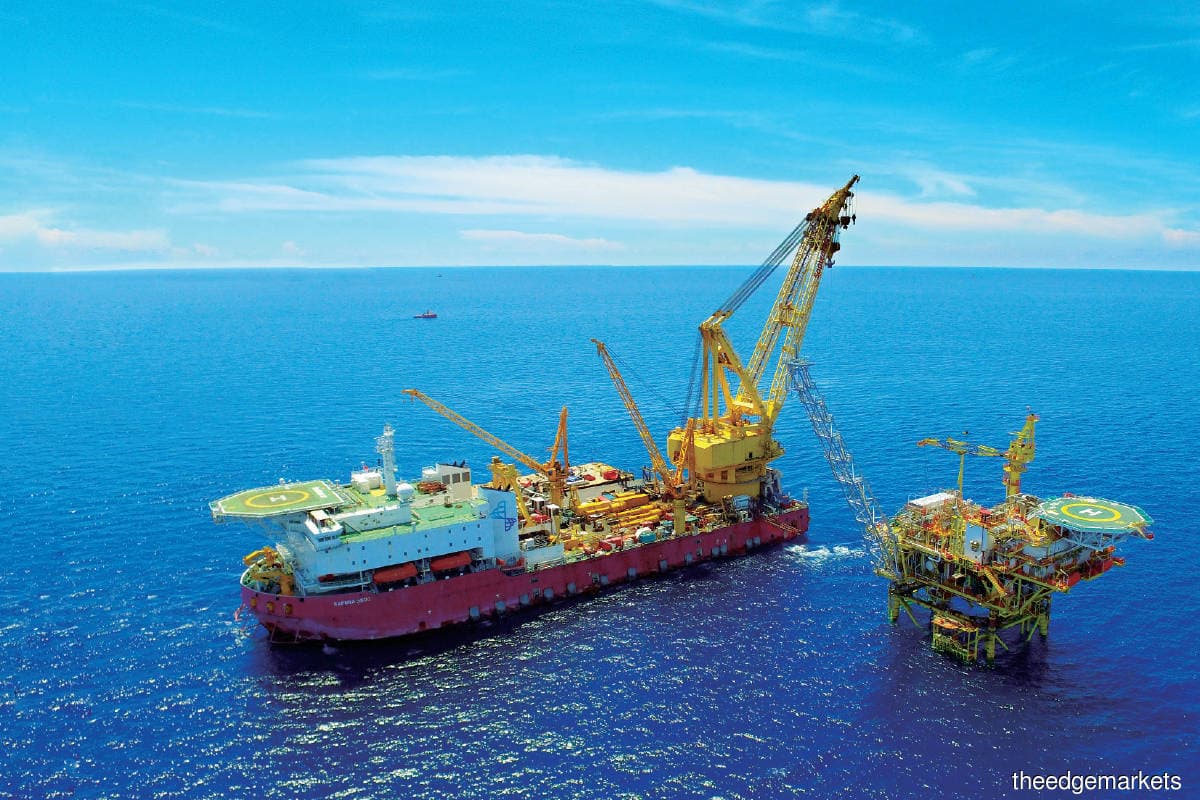
This article first appeared in The Edge Malaysia Weekly on June 21, 2021 - June 27, 2021
SAPURA Energy Bhd’s recent RM10 billion debt restructuring with a repayment holiday gave it critical breathing room to pick itself up, but there is still much to be achieved before it can declare its turnaround completed.
“Now its job is to try not to dig a deeper hole, and to wait for things to turn around,” says an analyst covering the oil and gas (O&G) sector.
The next few years will test its ability to manage its cash flow and debt levels. It may be some time before the market improves enough to allow a resizing of its portfolio and further monetisation of its many assets.
The oil downturn especially took a toll on Sapura Energy, which expanded too fast in a heated market and accumulated over RM18 billion in debt in the process.
Between FY2017 and FY2021 (ended Jan 31), provision for impairment stood at a whopping RM7.22 billion. Net asset per share deteriorated by over 73% to 56 sen, from RM2.19 in FY2017.
Some RM2.62 billion of retained earnings was erased in just a year in FY2018, after which retained losses ballooned to RM4.63 billion as at end-January this year.
Fortunately, the balance sheet restructuring that it embarked on in FY2020 and completed in March this year has helped improve key metrics.
The company has also reduced certain costs by up to 40%, although it had to downsize to 3,400 permanent staff, from 4,000 prior to the pandemic.
According to management, of the group’s RM1.2 billion in working capital facilities for new projects obtained from Maybank and CIMB, around 60% or RM800 million has yet to be utilised.
Finance costs have nearly halved from FY2019 and liquidity will not be an issue for the next 2½ years as the recent RM10 billion debt restructuring comes with a principal payment holiday for that period. This will help protect cash flow from operating activities, which has come off its lows.
The group is also in discussions to recoup the cost overshoot from Covid-19 in FY2021, amounting to RM286 million, which could support margins moving forward.
“Additionally, the group has recognised cost savings of RM430 million (2.7 times FY2021 loss), over half of the RM760 million cost optimisation programmes that have been implemented thus far,” says AmInvest Research in a note on Sapura Energy’s 4QFY2021 results.
“There may be more savings to come as these represent 58% of the RM1.3 billion planned initiatives involving commercial renegotiations, operational productivity, procurement, human resources and working capital,” the research house says.
This year (FY2022), Sapura Energy will recognise RM5.3 billion of its order book as well as RM1.6 billion under its jointly controlled entities. It is still off the year’s revenue target by 20% or RM1.7 billion.
Apart from the much-improved engineering and construction (E&C) division, which contributed 86% of the group’s revenue in FY2021, Sapura Energy has guided at least eight of its 15 drilling assets being utilised presently, which is above the 32% utilisation rate achieved last year when it registered segment breakeven.
Meanwhile the exploration and production (E&P) segment should benefit from higher oil prices, which averaged at US$60.90/bbl in 1Q2021 as opposed to under US$42/bbl in 2020. Net production currently stands at 37,000 barrels of oil equivalent per day, management said.
Group CEO Datuk Anuar Taib has pointed to a “robust” asset base that resulted in no impairment on its drilling and E&C assets last year.
“Against the backdrop of improving prospects of new jobs across the globe, improving cost structure and underpinned by a revitalised RM10 billion debt structure amid more optimistic crude oil prices, the stock currently trades at an undeserved fire-sale 0.2x P/BV (price-to-book value) for an integrated O&G operator with an established regional footprint and proven delivery record,” AmInvest adds.
But much still needs to be done. As at January this year, the group’s current borrowings stood at RM3.26 billion, alongside RM7.07 billion of long-term debt and cash of RM488.97 million. Net gearing remained elevated at 1.1 times.
“Unfortunately, no one knows its exact cash flow/profit breakeven although the new CEO has been aggressively cutting costs. Still, their projects will be lumpy here and there. For example, last quarter, they were disappointed with losses because of huge cost overruns,” an O&G analyst opines.
Further, the next crucial point of its restructuring — a portfolio review — may only happen in 2023 based on its roadmap.
To be sure, Sapura Energy’s largest shareholder Permodalan Nasional Bhd, which holds a 40.1% stake, explained its capital injection into the company in 2019 as “part of a comprehensive restructuring plan that includes the monetisation of Sapura Energy’s E&P business and spin-off of its drilling business”.
While the drilling segment is at break even, it still makes sense to exit amid long-term demand concerns, and as the segment lacks synergy with the rest of Sapura Energy’s portfolio, the analyst says.
“Demand for tender rigs never really recovered, so I believe it should dispose of the rig assets because as time goes by, the rigs will get older and obsolete, but with high asset costs.
“They will only work as cash flow machines if utilisation recovers to high levels persistently but I don’t see it in the near horizon,” the analyst adds.
Bloomberg data shows that Sapura Energy has five “buy” calls, three “hold” calls and six “sell” calls, with target prices ranging from 5 sen to 29 sen, with an average of 14 sen. Sapura Energy’s share price has risen 12% this year to close at 14 sen last Friday, giving the company a market capitalisation of RM2.24 billion.
Save by subscribing to us for your print and/or digital copy.
P/S: The Edge is also available on Apple's AppStore and Androids' Google Play.

